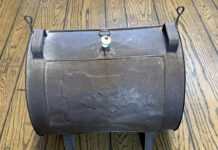Many of you will recall earlier articles in this column describing on-farm research to quantify the effectiveness of using liquid dairy manure as the only source of nitrogen for production of no-till corn.
You will recall that we conducted a replicated on-farm research trial at the farm of Myron Wehr in New Waterford, comparing spring and fall manure applications, incorporated and surface applied.
Our challenge was to explore methods of incorporating manure into the soil in order to obtain optimum utilization of the nitrogen, without compromising the benefits of no-till.
We evaluated soil nitrogen levels, plant tissue nitrogen levels and stalk nitrate nitrogen levels to see if incorporating manure resulted in better utilization of the nitrogen.
We also tested the effectiveness of a nitrogen stabilizer in the manure (Conklin Products’ Guardian).
The most dramatic effect we found this year was a severe reduction in plant emergence related to the incorporation of manure in the spring.
We dropped about 34,200 seeds per acre. Average plant populations by treatment (the average of eight replications) May 31 ranged from 11,900 (spring incorporated) to 28,500 plants per acre.
The corn has been harvested and yields calculated. Not much to write home about, but interesting nonetheless.
Yields in the severely drought-stressed plots ranged from 26.6 to 94.3 bushels per acre with an overall average of 70 from the 40 plots.
We used the following legend: SS: spring surface, SI: spring incorporated, FS: fall surface, FI: fall incorporated, LN: liquid nitrogen, LNG: liquid nitrogen with guardian (Conklin nitrogen stabilizer).
Each value represents the average of eight replications of the respective treatment.
As you might expect, yields, even in severely drought-stricken corn, are closely correlated with plant population. We can only guess what the results would have been with more normal weather conditions at plant emergence in the spring and during the summer growing period!
We identified several possible causes of the reduced plant emergence in the spring manure incorporated plots:
* Interaction of surface tillage (AerWay Tool) followed by cold, wet conditions resulting in excess moisture retention in the germination zone.
* Excessive contact of manure with seed in the germination zone.
* Excessive crusting of soils due to slightly disturbed surface condition combined with heavy rainfall.
Nitrogen utilization. Our major challenge in this research was to attain good utilization of manure nitrogen in the no-till system.
It is well established that manure that is surface applied loses a large percentage of its nitrogen to volatilization. Would the improved nitrogen retention reflected in the Pre-side-dress Nitrate Nitrogen results for incorporated applications result in improved yields?
We hope to find out in 2003.
Compaction results. We found some interesting results in our compaction research in 2002.
We compared readings before and after manure applications to see if the manure application equipment caused significant compaction.
We found that the AerWay Tool apparently reduced the amount of root-zone compaction in the incorporated plots.
2003 plans. For the 2003 corn crop we have set up a similar experiment to compare the AerWay Implement to another manure incorporation tool – Balzer deep sweep implement.
We plan to again compare spring vs. fall applications, incorporated and surface applied. We will again monitor soil and plant tissue nutrient levels, soil compaction and yields.
(The author is an agricultural extension agent in Columbiana County, Ohio. Questions or comments can be sent in care of Farm and Dairy, P.O. Box 38, Salem, OH 44460.)












